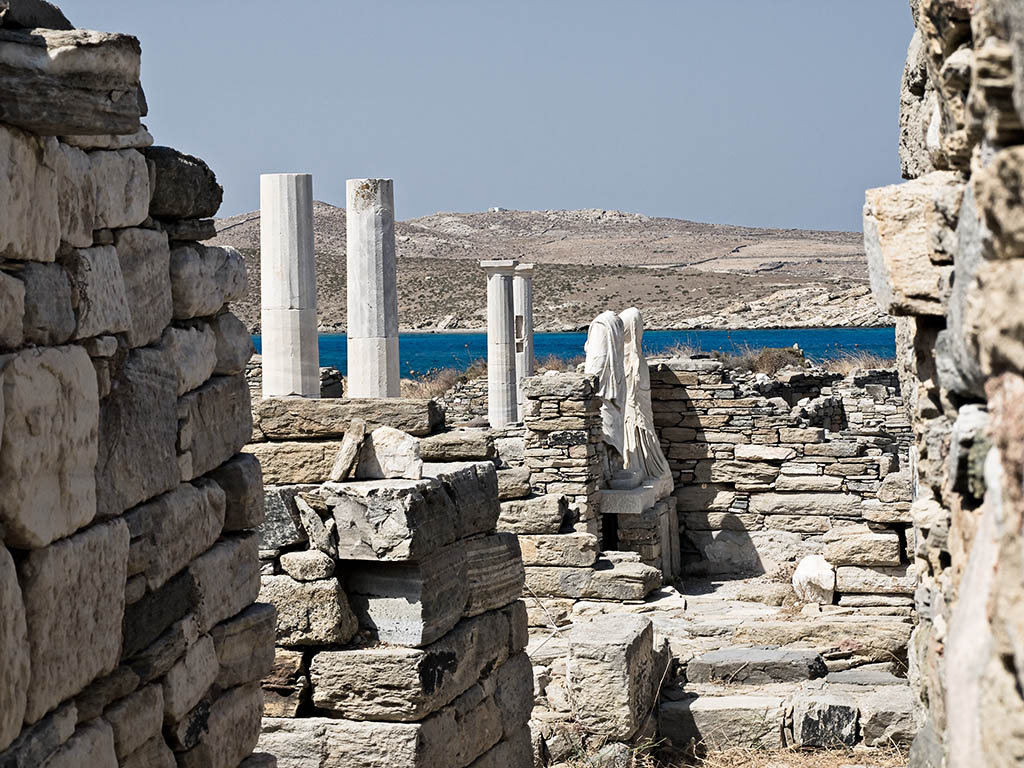The most common way to go to the Delos Island us by taking a boat from Mykonos, for a half an hour trip. Travellers will disembark on an old harbour, which has been used since the ancient times. Nearby, there is the Agora of Competaliasts, which is a large square with the island’s primary market. The Delos Island was popular as the place where Hermes was worshipped in the 166 BC. In the ancient era, the Delos Island was the place where festivals for the Roman God of crossroads, Compitales, were held. Until these days, remains of the ancient markets and festivals are still visible. Holes on the ground were the places where merchants drove wooden pegs to the ground to support their awnings. There are two monuments in the center, dedicated for Hermes and Maia, his mother. An impressive paved road is located at the northeast side of the square and it leads to the sanctuary of Propylaea. The walkway was lined with marble benches for pilgrims and many votive statues. Visitors will eventually reach the sanctuary of Apollo and its main entrance is called the Doric Propylaea.

The propylon or entrance gate was constructed by Athenians and it is made by from gray blue marbles. Its steps have been visibly worn by the countless feet that have stepped on them for countless years. Near the Propyleae, there’s a building constructed from Naxian marble. The building passes different stages of construction and its entrance face different direction. The roof, floor, pilasters, linters and thresholds are made from marble. It’s probably one of the earliest temples of Apollo. There’s also the building called the Temple F and another large rectangular-shaped building called the Workshop of Theandridai. Visitors can visit the an Apollo statue, also known as the Kouros, with its characteristically archaic posture and design. Smaller Apollo temples are located north of the House of the Naxians. Another big temple in the Delos island is the Temple of the Seven Statues or Temple of the Athenians. It has six iconic Doric columns and made almost entirely of Pentelic marble.
The mythical Horn Altar in the Delos island was supposedly constructed by Apollo himself. There are other ruins to the west of the Altar, which could be related to the sanctuary of Apollo Pythios. To the east, there is the Sema, which is likely the tombs of Hyperoche and Laodike, the two Hyperborean maidens. The monument of the Hexagons is decorated with intricately designed marble blocks. The Ekklesiasterion is located on the northwest part of the Sanctuary of Apollo and it was the location of the general assembly for ancient people of Delos. Fine marble benches can be found here, as well a couple of halls. The Theke is another monument dedicated for two other Hyperborean maidens, Opis and Arge. The Delos island also has some remnants of Roman civilization. The statue of Gaius Billienus, a Roman legate, is located at the east of the stoa. Like many Roman statues, he is depicted in the Hellenistic style and military attire.
